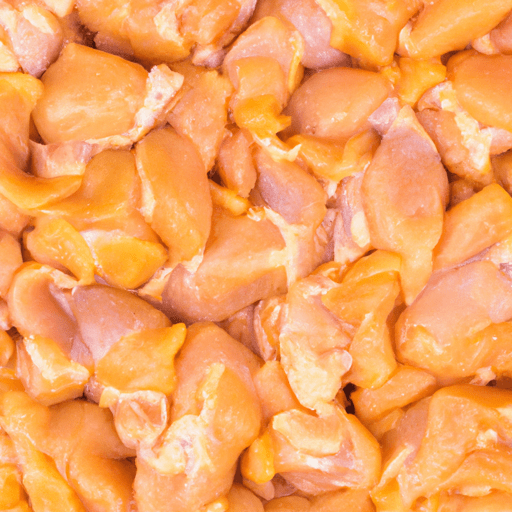Cooking with Skinless Chicken Parts: A Versatile and Healthy Choice
When it comes to chicken, there is a wide variety of cuts and parts to choose from. One such option is skinless chicken parts, which have gained popularity in recent years due to their versatility and health benefits. In this blog post, we will explore the taste, common uses in cooking, nutritional value, and some interesting facts about skinless chicken parts.
Taste and Texture
Skinless chicken parts are known for their mild and delicate flavor. Unlike their skin-on counterparts, which can have a slightly greasy or fatty taste, skinless chicken parts offer a clean and lean flavor profile. This makes them ideal for showcasing the flavors of marinades, spices, and sauces, as they readily absorb and complement the accompanying ingredients.
In terms of texture, skinless chicken parts have a tender and juicy quality. Whether you choose boneless, skinless chicken breasts, thighs, or drumsticks, their meat remains succulent when cooked properly, making them an excellent choice for a wide range of recipes.
Common Uses in Cooking
Skinless chicken parts are incredibly versatile and can be used in numerous dishes across various cuisines. Here are some popular ways to incorporate them into your cooking:
- Grilled or Pan-fried: Skinless chicken breasts can be grilled or pan-fried to perfection, making them an ideal centerpiece for a healthy and protein-packed meal.
- Baked or Roasted: Skinless chicken thighs or drumsticks turn wonderfully crispy when baked or roasted. The absence of skin allows them to develop a delicious golden-brown exterior without excessive grease.
- Stir-fried: Thinly-sliced skinless chicken parts are excellent for stir-fried dishes, absorbing the flavors of the vibrant vegetables and sauces in a quick and delicious manner.
- Soups and Stews: Skinless chicken parts contribute tenderness and flavor to heartwarming soups and stews, such as chicken noodle soup or chicken curry.
Nutritional Benefits
Skinless chicken parts are not only delicious but also provide several nutritional benefits. They are a great source of lean protein, low in fat, and contain essential vitamins and minerals. Some of the key nutritional highlights of skinless chicken parts include:
- Protein: Skinless chicken parts are packed with high-quality protein, which is essential for building and repairing tissues, supporting a healthy immune system, and maintaining muscle mass.
- Vitamins: Chicken is a good source of vitamins B6 and B12, important for energy metabolism and proper brain function. It also contains vitamin D, which aids in calcium absorption and promotes bone health.
- Minerals: Skinless chicken parts provide essential minerals like iron, zinc, and selenium. Iron is vital for oxygen transport, while zinc and selenium are crucial for the immune system and overall health.
Interesting Facts
Here are some intriguing facts about skinless chicken parts that might pique your interest:
- Did you know that skinless chicken breasts are one of the leanest sources of protein? They contain less fat and fewer calories compared to cuts with skin, making them an excellent choice for those watching their weight or following a low-fat diet.
- Skinless chicken thighs are often preferred by chefs and home cooks due to their incredible flavor and juicy meat, making them perfect for grilling, baking, or braising.
- Skinless chicken drumsticks are a favorite among kids and adults alike. Their convenient shape, flavorful meat, and ease of eating make them a popular choice for finger foods, buffets, and picnics.
In conclusion, skinless chicken parts are a fantastic addition to any kitchen. With their mild flavor, tender texture, and versatility in cooking, they offer countless possibilities for delicious and healthy meals. So go ahead, give skinless chicken parts a try and explore the endless culinary delights they have to offer!
Skinless Chicken Parts
- Origin: Chickens are domesticated birds that are believed to have originated from Southeast Asia, specifically in the area that is now known as Thailand and Vietnam. Well-suited to agriculture, the domestication of chickens can be traced back to around 2000 BCE.
- Common Uses: Skinless chicken parts, such as skinless chicken breasts, thighs, or drumsticks, are commonly used in various cuisines around the world. They are versatile ingredients that can be utilized in a wide range of dishes, including grilled, roasted, stir-fried, baked, or used in soups and stews.
- Nutritional Benefits: Skinless chicken parts are an excellent source of high-quality protein, which is essential for the growth and repair of body tissues. They are also low in fat, especially compared to chicken parts with the skin left on, making them a healthier choice for individuals looking to reduce calorie and fat intake. Additionally, skinless chicken parts provide significant amounts of vitamins and minerals, including B vitamins, niacin, phosphorus, and selenium.
- Unique Properties or Historical Significance: Chicken has a long history of consumption across various cultures. Throughout history, chicken meat has been highly valued for its taste, versatility, and relatively low cost compared to other meats. In the early 20th century, the development of commercial broiler chickens led to the increased availability and affordability of chicken meat, making it a widely-consumed protein source globally. The popularity of skinless chicken parts has since increased due to their leaner and healthier attributes, appealing to those looking for a low-fat protein option.




Use the share button below if you liked it.
It makes me smile, when I see it.